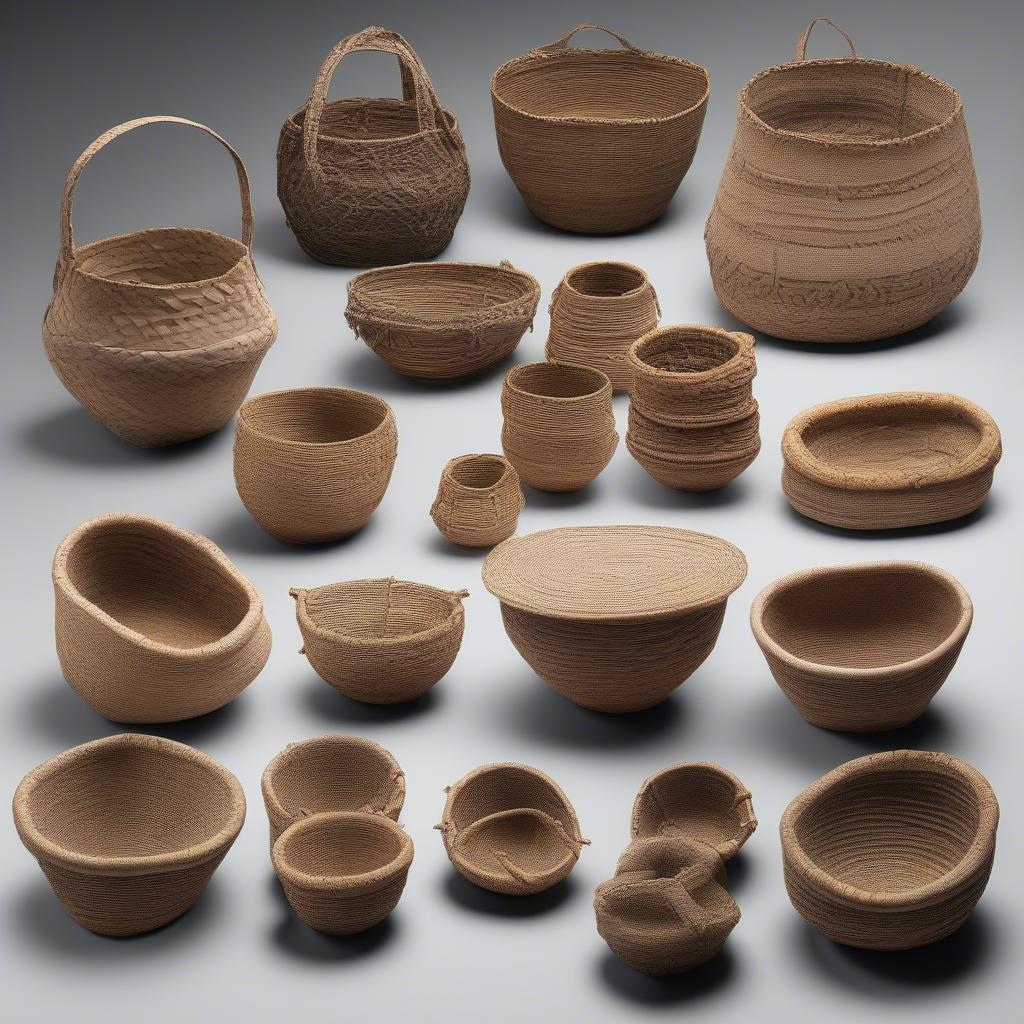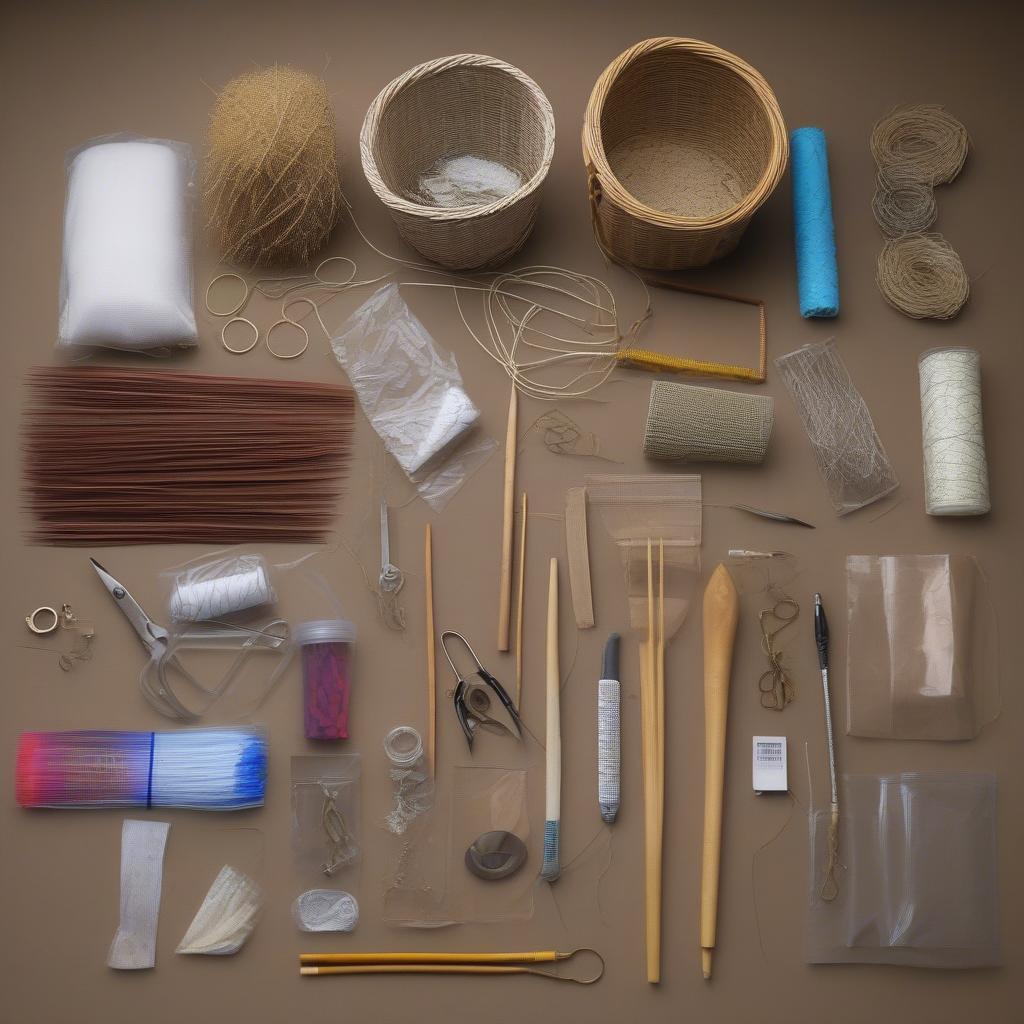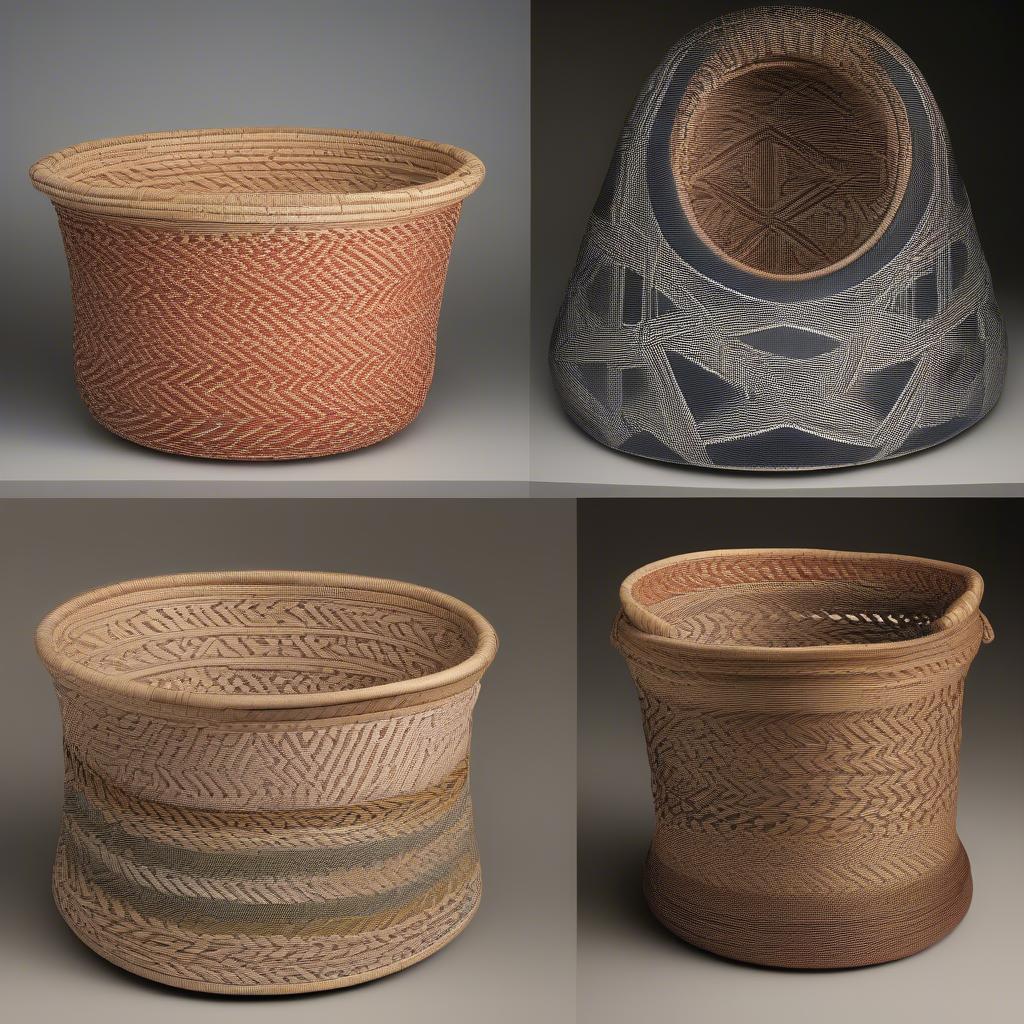Basket Weaving
Mastering the Art of Triaxial Basket Weaving
Triaxial Basket Weaving is a captivating technique that results in stunning, sturdy baskets with a unique three-strand weave. This intricate method, though initially appearing complex, can be mastered with practice and patience. This comprehensive guide will delve into the intricacies of triaxial weaving, exploring its history, materials, techniques, and offering valuable tips for both beginners and seasoned weavers.
Unraveling the History of Triaxial Basket Weaving
Triaxial weaving, also known as three-way weaving, has a rich history rooted in various cultures worldwide. Evidence suggests its origins date back centuries, with examples found in ancient artifacts from South America and other regions.  Ancient Triaxial Woven Baskets from Archaeological Digs Initially, these baskets served practical purposes, utilized for storage, transportation, and even ceremonial practices. Today, triaxial basket weaving continues to thrive, both as a traditional craft and a contemporary art form.
Ancient Triaxial Woven Baskets from Archaeological Digs Initially, these baskets served practical purposes, utilized for storage, transportation, and even ceremonial practices. Today, triaxial basket weaving continues to thrive, both as a traditional craft and a contemporary art form.
Materials and Tools for Triaxial Weaving
Before embarking on your triaxial weaving journey, gathering the right materials and tools is essential. While traditional materials like reeds, grasses, and willow are commonly used, you can experiment with a variety of flexible materials.  Materials for Triaxial Basket Weaving Rattan and wicker are also excellent choices, offering durability and a beautiful natural aesthetic. A sharp pair of scissors or pruning shears, a measuring tape, and a container for soaking your chosen materials are crucial tools for a smooth weaving process.
Materials for Triaxial Basket Weaving Rattan and wicker are also excellent choices, offering durability and a beautiful natural aesthetic. A sharp pair of scissors or pruning shears, a measuring tape, and a container for soaking your chosen materials are crucial tools for a smooth weaving process.
The Fundamentals of Triaxial Weaving: A Step-by-Step Guide
Triaxial weaving revolves around the manipulation of three weavers, intersecting at 60-degree angles. This unique structure creates a visually appealing and remarkably strong basket. Here’s a breakdown of the basic steps:
- Preparing the Weavers: Soak your chosen weaving materials in water to make them pliable and prevent breakage.
- Forming the Core: Begin by creating a six-pointed star with six weavers, ensuring they intersect at the center.
- Weaving the Base: Continue weaving around the core, adding new weavers as needed, and maintaining the triaxial pattern.
- Shaping the Basket: As you weave upwards, gently manipulate the weavers to create the desired shape of your basket.
- Finishing the Rim: Secure the ends of the weavers by tucking them into the weave or using a decorative binding technique.
Tips and Tricks for Successful Triaxial Weaving
Triaxial weaving can be challenging for beginners, but these tips will help you navigate the process:
- Start Small: Begin with a small project to familiarize yourself with the technique before tackling larger, more complex designs.
- Maintain Even Tension: Consistent tension on the weavers is crucial for a uniform and well-structured basket.
- Practice Makes Perfect: Don’t be discouraged if your first few attempts aren’t perfect. Like any craft, triaxial weaving requires practice to master.
Exploring Variations and Advanced Techniques
Once you’ve grasped the fundamentals, you can explore a myriad of variations and advanced triaxial weaving techniques.  Advanced Triaxial Weaving Patterns Adding color, incorporating different materials, and experimenting with rim finishes can elevate your basket weaving to an art form.
Advanced Triaxial Weaving Patterns Adding color, incorporating different materials, and experimenting with rim finishes can elevate your basket weaving to an art form.
“Triaxial weaving allows for endless creativity,” says renowned basket weaver, Anya Petrova. “The interplay of angles and materials creates a dynamic canvas for artistic expression.”
Triaxial Weaving: A Fusion of Art and Functionality
Triaxial basket weaving is more than just a craft; it’s a testament to human ingenuity and artistic expression. From its humble beginnings as a practical skill to its modern-day resurgence as a cherished art form, triaxial weaving continues to captivate and inspire. Whether you’re seeking a relaxing hobby or a means of creating beautiful, functional objects, triaxial weaving offers a rewarding experience for all who embrace its intricacies.
Conclusion
Triaxial basket weaving is a unique and fulfilling craft that offers endless possibilities for creative expression. With patience and practice, you can master this intricate technique and create stunning baskets that are both beautiful and functional. So, gather your materials, follow the steps, and embark on your triaxial weaving adventure today.
FAQ
- What is the difference between triaxial and traditional basket weaving?
- What are the best materials for triaxial weaving?
- How do I start a triaxial weave?
- What are some common mistakes to avoid in triaxial weaving?
- Where can I find resources and tutorials for triaxial weaving?
- How long does it take to weave a triaxial basket?
- Can I use triaxial weaving to create other objects besides baskets?
Common Scenarios and Questions
- Scenario: Difficulty maintaining even tension. Solution: Practice consistently and try using a tensioning device.
- Question: Can I combine different materials in a single triaxial weave? Answer: Absolutely! Experimenting with various materials can add depth and texture to your baskets.
Further Exploration
Explore our other articles on basket weaving techniques and discover the world of wicker and rattan craftsmanship.
When you need assistance please contact us at Hanoi, Vietnam or Tech Avenue, Suite 12, San Francisco, CA 94105, USA. We have a 24/7 customer service team.
